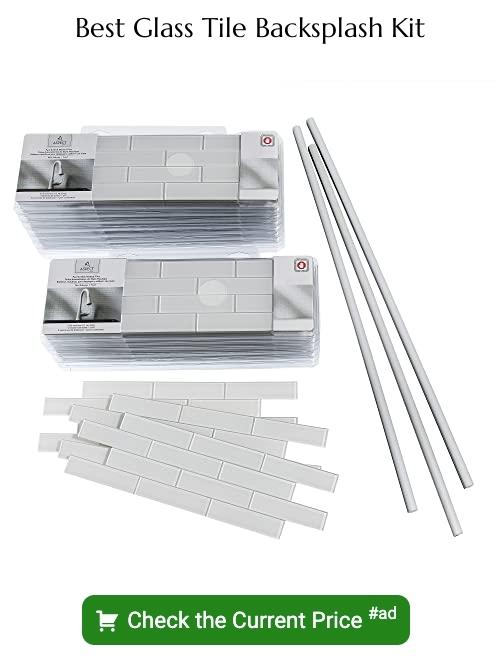Last updated on
Discover the benefits of using glass tile for your kitchen backsplash, as we delve into its aesthetic appeal, durability, and easy maintenance.
Glass tiles have become increasingly popular in modern home decor, especially when it comes to kitchen backsplashes. They are not only aesthetically pleasing but also offer a variety of benefits that make them an ideal choice for many homeowners.
However, before you jump on the glass tile bandwagon, it’s important to consider whether or not they are a good fit for your kitchen. In this article, we will explore the advantages and disadvantages of using glass tiles as a kitchen backsplash and help you make an informed decision about whether or not they’re right for you.
So let’s dive in!
What's Inside
Benefits of Glass Tile Backsplash
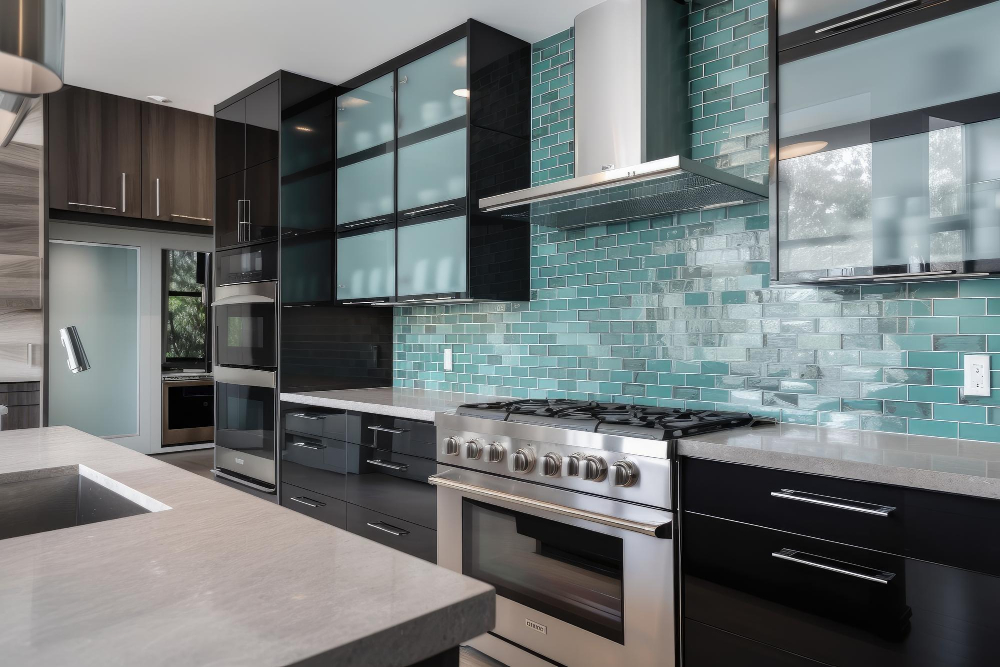
One of the most significant advantages is their ability to reflect light, which can help brighten up your kitchen and create a more spacious feel. Glass tiles are non-porous and resistant to stains, making them easy to clean with just soap and water.
Another benefit of glass tile backsplashes is their durability. Unlike other materials such as ceramic or porcelain tiles that may crack or chip over time, glass tiles are highly resistant to wear-and-tear from daily use in the kitchen.
Furthermore, if you’re looking for an eco-friendly option for your home decor needs – look no further than glass tile! Glass is made from natural materials like sand and recycled content can be used in its production process too. This makes it one of the most sustainable options available on the market today.
Durability of Glass Tile

Unlike ceramic or porcelain tiles, glass is non-porous and does not absorb moisture or stains. This means that it’s resistant to mold, mildew, and bacteria growth – all of which can be a problem in the kitchen environment.
In addition to being water-resistant, glass tile is also heat-resistant up to 400 degrees Fahrenheit. This makes it ideal for use behind stovetops where high temperatures are common.
Another advantage of using glass tile as a backsplash material is its ability to withstand wear and tear over time. Glass tiles do not chip easily like other materials such as ceramic or stone; they’re less likely to crack under pressure from heavy pots or pans accidentally dropped on them.
Eco-Friendliness of Glass Tile
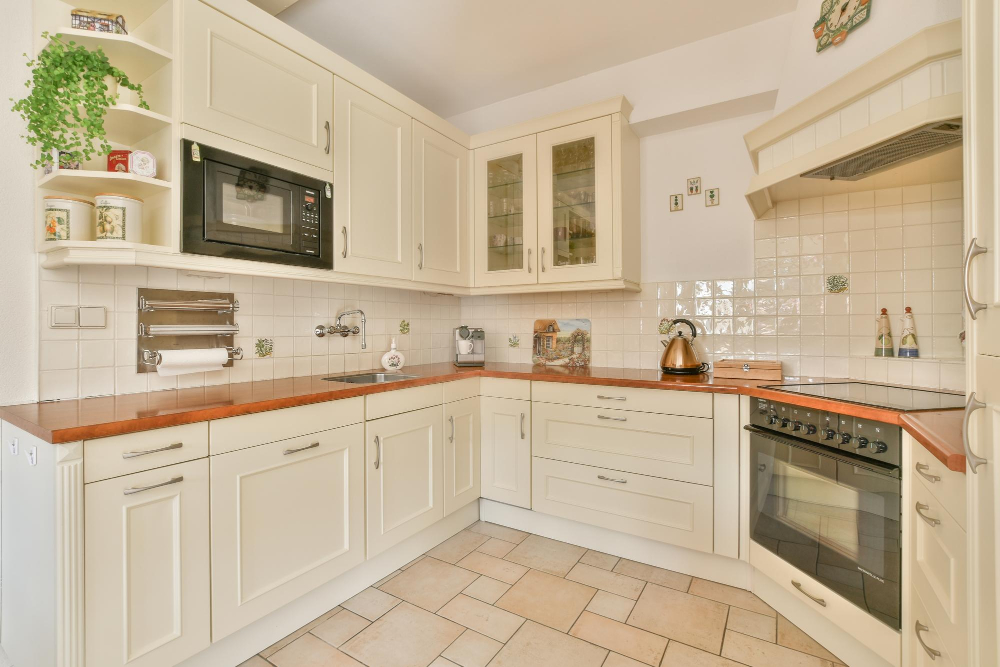
They are made from recycled glass, which reduces the amount of waste that ends up in landfills. They do not emit any harmful chemicals or fumes during production or installation.
Another advantage of using glass tiles is that they can help reduce energy consumption in your home. Glass reflects light and heat, which means it can help keep your kitchen cooler during hot summer months and warmer during winter months when used as a backsplash.
Furthermore, because glass is non-porous and does not absorb moisture like other materials such as ceramic tile or natural stone, it helps prevent mold growth on walls behind the backsplash.
Versatility of Glass Tile
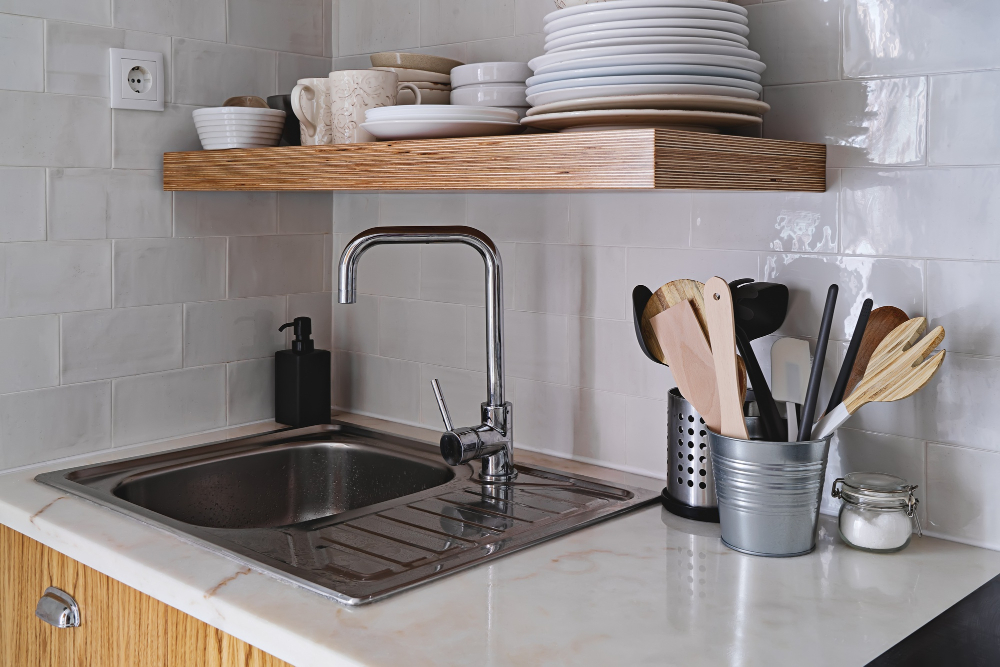
They come in different shapes, sizes, colors, textures, finishes and patterns that allow you to customize your design according to your personal style preferences. You can choose from glossy or matte finishes depending on the look you want to achieve.
One of the most significant advantages of glass tile is its ability to reflect light which makes it an excellent choice for small kitchens with limited natural light sources. The reflective properties make the space appear larger than it actually is by bouncing off light around the room.
Another way glass tiles offer versatility is through their ability to blend well with other materials such as stone or metal accents. This allows homeowners more flexibility when designing their kitchen backsplash since they have more options available for creating a cohesive look throughout their home decor.
Glass tiles are also easy-to-cut which means they can be customized into any shape needed for intricate designs or curved walls without breaking easily like ceramic tile would do under similar circumstances.
Aesthetic Appeal of Glass Tile

They come in a variety of colors, shapes, and sizes that can complement any kitchen design. Glass tiles have a unique reflective quality that adds depth and dimension to your space.
The light-reflecting properties of glass tile make it an excellent choice for small kitchens or those with limited natural light as they help brighten up the room.
Another advantage of glass tile is its ability to create stunning visual effects when used creatively. You can mix different shades and textures together or use them in patterns like herringbone or chevron designs, creating an eye-catching focal point in your kitchen.
Moreover, you don’t have to stick with traditional square-shaped tiles; there are many other options available such as hexagonal shapes or even mosaic patterns made from smaller pieces of glass tile.
Glass Tile Colors, Shapes, and Sizes

This versatility makes them an excellent choice for homeowners who want to add a unique touch to their kitchen backsplash. You can choose from classic subway tiles or opt for more intricate designs like mosaics or geometric patterns.
When it comes to color options, glass tiles offer endless possibilities. From bold and bright hues that make a statement to subtle shades that blend seamlessly with your existing decor – there’s something for everyone.
In terms of shape and size, glass tile offers even more variety than traditional ceramic tile options. You can choose from small mosaic pieces that create intricate designs or larger rectangular pieces that provide clean lines and modern appeal.
Ultimately the choice of color, shape, and size will depend on your personal style preferences as well as the overall design aesthetic you’re trying to achieve in your kitchen space.
Easy Maintenance of Glass Tile
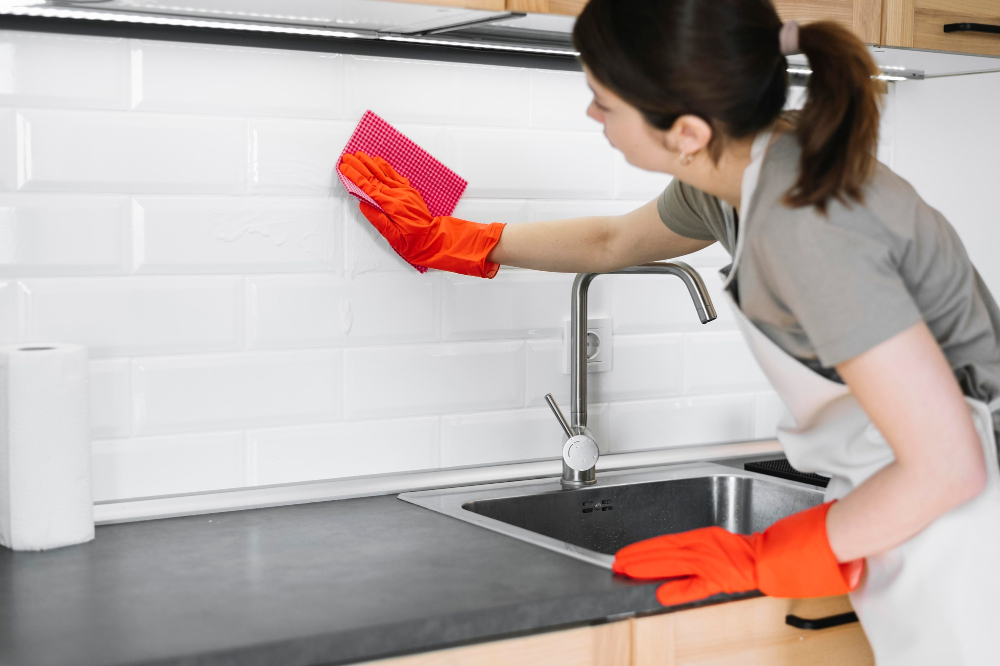
Unlike other materials, glass tiles do not require any special cleaning products or techniques. You can easily clean them with a damp cloth and mild soap solution.
This makes them an ideal choice for busy homeowners who don’t have the time or energy to spend on maintaining their kitchen backsplash.
Another advantage of glass tile is that it is resistant to stains and scratches, which means you won’t have to worry about unsightly marks ruining your backsplash’s appearance over time. Because they are non-porous, glass tiles do not absorb moisture or bacteria like other materials such as ceramic tile.
To keep your glass tile looking its best for years to come, it’s important always to wipe up spills immediately and avoid using abrasive cleaners that could scratch the surface of the tiles.
Installation of Glass Tile
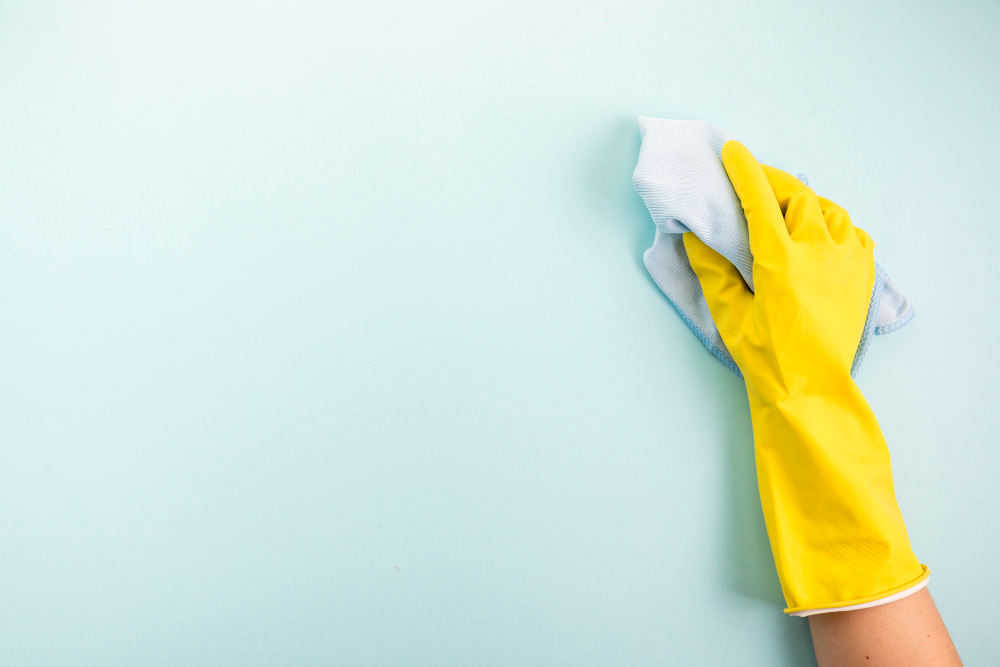
Before you begin the installation process, make sure that your wall surface is clean and free from any debris or grease. You will also need to measure the area where you want to install the tiles carefully.
Once you have prepared your wall surface, apply a thin layer of adhesive using a trowel. Then place each tile onto the adhesive in your desired pattern while making sure they are level with one another.
Use spacers between each tile for even spacing.
After all tiles have been installed on the wall, allow them to dry completely before grouting them together with unsanded grout (sanded grout can scratch glass). Once again use spacers between each joint for even spacing.
Wipe off any excess grout with a damp sponge and let everything dry overnight before sealing around edges if necessary.
Tips for Installing Glass Backsplashes
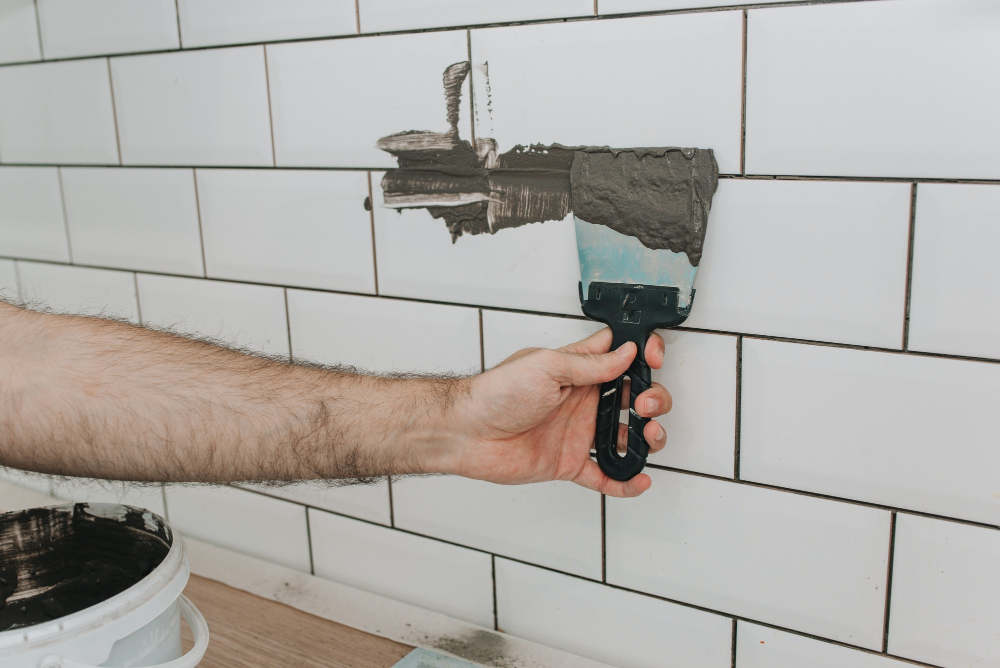
It’s important to keep in mind that installing glass tiles requires some special considerations. Here are some tips to help you install your glass backsplash successfully:
1. Prepare the surface: Make sure the wall is clean and dry before you begin installation.
2. Measure carefully: Glass tiles come in various sizes, so measure accurately and cut precisely.
3. Use appropriate adhesive: Choose an adhesive that is specifically designed for use with glass tile.
4. Apply grout correctly: Be careful not to scratch or damage the surface of your new tiles when applying grout between them.
5. Seal properly: Once installed, seal your new backsplash properly using silicone caulk around edges and corners where water could seep through.
Cost Comparison

Glass tiles are generally more expensive than ceramic tiles, but the price can vary depending on factors such as size, color, and design. On average, glass tile costs between $7 and $30 per square foot installed while ceramic tile ranges from $3 to $15 per square foot installed.
While the upfront cost of glass tile may be higher than that of ceramic tile for your kitchen backsplash project; however its durability and easy maintenance make it worth considering in the long run. Additionally with so many options available in terms of colors shapes sizes designs etc., you can find a style that fits both your taste preferences as well as budget constraints.
Glass Vs. Ceramic Tile for Backsplashes
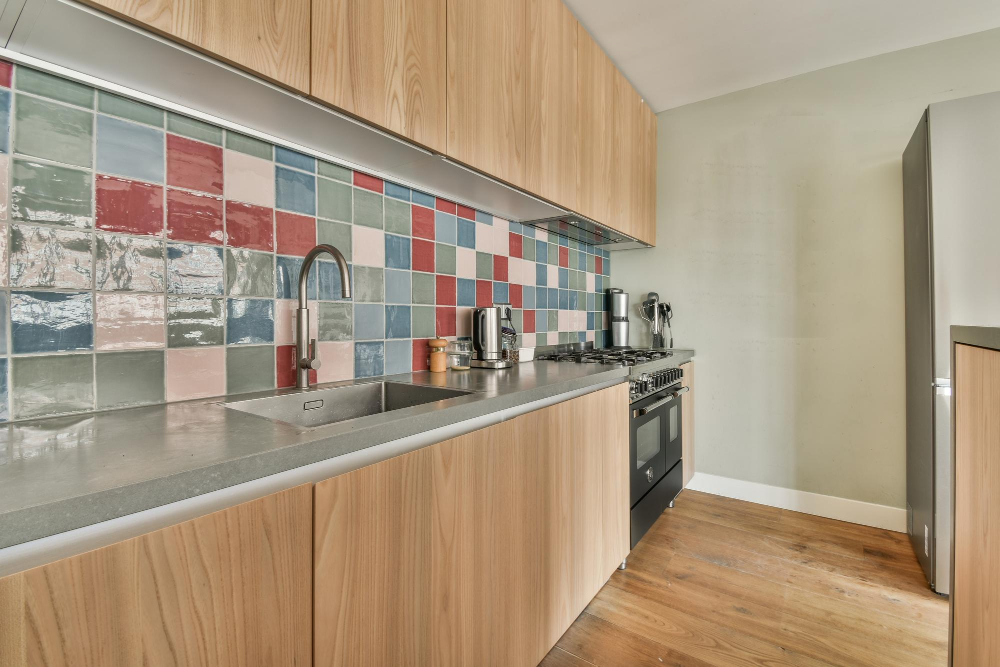
While both materials have their advantages and disadvantages, the choice ultimately depends on personal preference.
Ceramic tiles are a popular choice for kitchen backsplashes because they come in various colors, shapes, sizes and designs. They’re also relatively affordable compared to other tile options.
Ceramic is durable but not as much as glass; it can chip or crack if hit with something heavy.
On the other hand, glass tiles offer an elegant look that’s hard to match with any other material. Glass reflects light beautifully which makes small kitchens appear larger than they actually are while adding depth and dimensionality into space.
It’s also easy-to-clean since its surface doesn’t absorb stains like ceramic does.
In terms of installation difficulty level: installing ceramic tile is easier than installing glass tile due to its weight difference (ceramic being heavier). However, this shouldn’t be too big of an issue if you hire professionals who know what they’re doing.
Pros and Cons of Glass Tiles

They are easy to clean, durable, and come in a variety of colors and shapes. However, like any other material used in home decor, glass tiles also have their disadvantages.
One of the main drawbacks of glass tile is its cost. Glass tiles can be more expensive than other materials such as ceramic or porcelain tile.
They require professional installation which adds to the overall cost.
Another disadvantage is that glass tiles can be prone to cracking or chipping if not installed correctly or if heavy objects fall on them. This makes it important to hire an experienced installer who knows how to properly install these delicate pieces.
Lastly, while there are many color options available for glass tile backsplashes some homeowners may find it difficult finding just the right shade they want since there aren’t as many options compared with ceramic and porcelain alternatives.
Pros and Cons of Ceramic Tiles
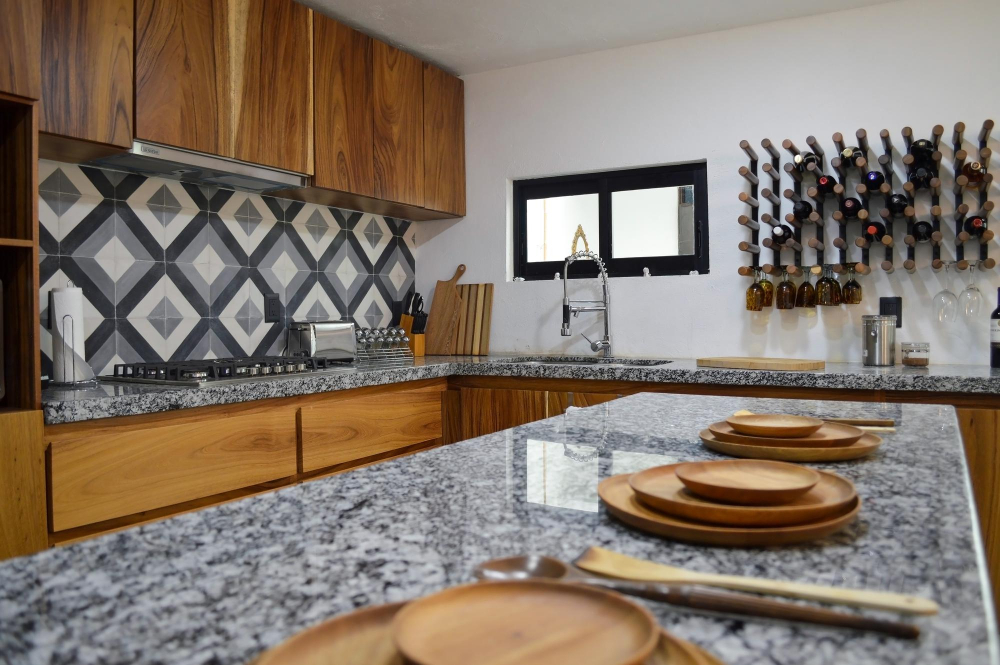
They come in a wide range of colors, shapes, and sizes and can be customized to fit any design style. However, like glass tiles, they also have their pros and cons.
Pros:
- Durability: Ceramic tiles are known for their durability and resistance to scratches.
- Cost-effective: Compared to other materials such as natural stone or metal tile options ceramic is relatively affordable.
- Easy maintenance: Ceramic tile is easy to clean with just soap water making it an ideal choice for busy homeowners.
Cons:
- Limited design options: While ceramic comes in many different styles there aren’t as many unique designs available compared with glass or natural stone.
- Prone To Cracking – Although durable when installed correctly if the subfloor isn’t levelled properly then over time the weight of foot traffic may cause cracking
- In conclusion while ceramic has its advantages it’s important that you weigh up all your options before deciding on which material will work best within your home decor scheme.
The Verdict: Glass or Ceramic Tiles for Kitchen?
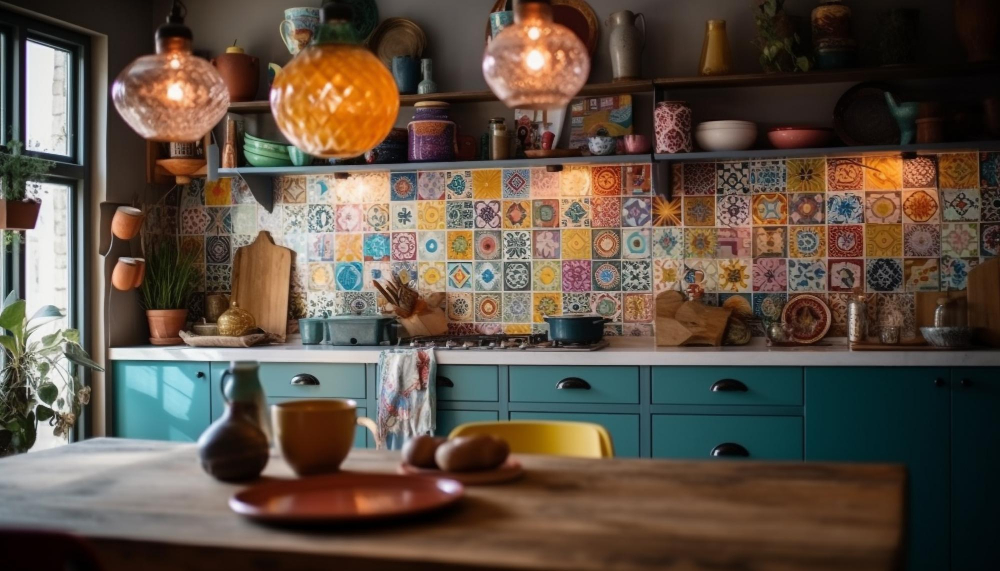
While both materials have their advantages and disadvantages, the final decision will depend on your personal preferences.
Ceramic tiles are a popular choice for kitchen backsplashes because they come in various colors, shapes, sizes and patterns. They’re also relatively affordable compared to other tile options.
Ceramic is durable but not as strong as glass; it can chip or crack if hit with something heavy.
On the other hand, glass tiles offer an elegant look that’s hard to match with any other material. Glass reflects light beautifully which makes small kitchens appear larger than they actually are while adding depth and dimensionality into space.
Glass is also easy-to-clean since its surface doesn’t absorb stains or odors like ceramic does.
In terms of cost comparison between these two materials: while some high-end ceramics may be more expensive than low-end glasses (and vice versa), generally speaking -glass tends towards being pricier due mainly because of its unique aesthetic appeal.
Alternatives to Glass Tile
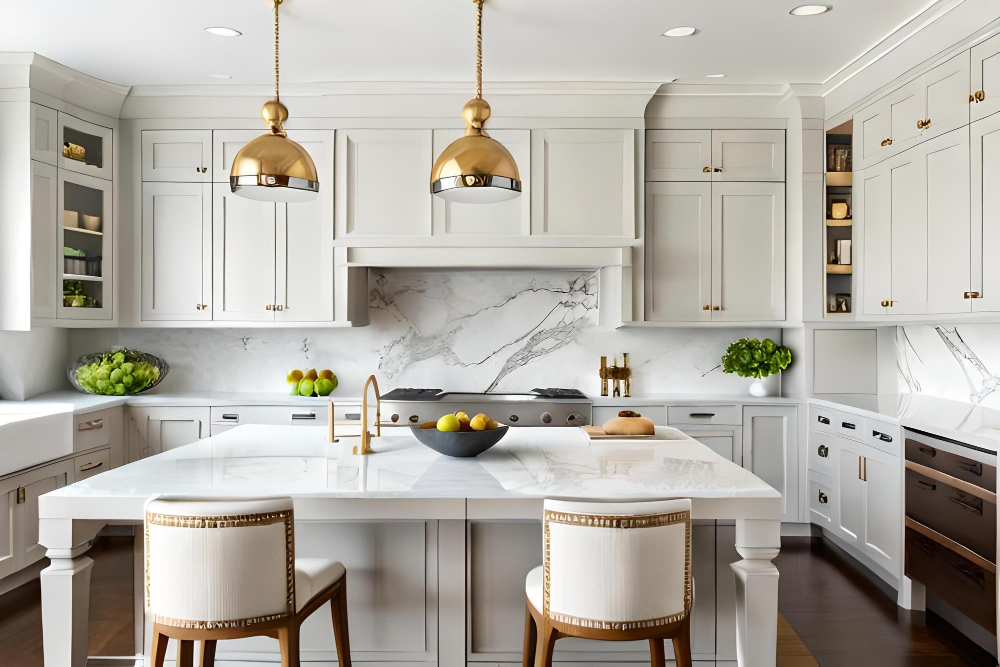
If you’re looking for an alternative to glass tile backsplashes, there are several options available that can still provide a beautiful and functional addition to your kitchen.
One popular option is ceramic tile. Ceramic tiles come in a wide range of colors and designs, making it easy to find one that complements your kitchen decor.
They are also durable and easy to clean, making them ideal for use as a backsplash.
Another alternative is natural stone tiles such as marble or granite. These materials add elegance and sophistication to any space but require more maintenance than other types of tile due to their porous nature.
Metallic finishes like stainless steel or copper can also make great alternatives if you’re looking for something unique yet practical in terms of cleaning up spills or splatters from cooking activities on the stove top area behind it.
Choosing a Tile Backsplash Size

First and foremost, you want to make sure that the size of your tiles complements the overall design aesthetic of your kitchen. Larger tiles can create a more modern look while smaller tiles can give off a classic or vintage vibe.
Another factor to consider is how much space you have available for tiling. If you have limited wall space between cabinets and countertops, larger tiles may not be practical as they will require more cuts and waste material during installation.
On the other hand, if you have ample wall space or an open-concept kitchen with high ceilings, larger glass tile sizes could be an excellent choice as they will create visual interest without overwhelming the room’s design.
Backsplash Necessity in Kitchens

Not only do they protect your walls from spills and splatters, but they also add an extra layer of style to your space. A well-designed backsplash can tie together all the elements in your kitchen and make it look complete.
While some homeowners may choose not to install a backsplash due to budget constraints or personal preference, most experts agree that having one is essential for maintaining the longevity of your walls. Without a proper barrier between cooking surfaces and drywall or plasterboard, grease stains can be difficult if not impossible to remove.
Glass tiles offer an excellent solution for those looking for both practicality and aesthetics in their kitchens. They provide ample protection against moisture damage while adding visual interest with their reflective surface properties.
Expert Opinions On Glass Tile
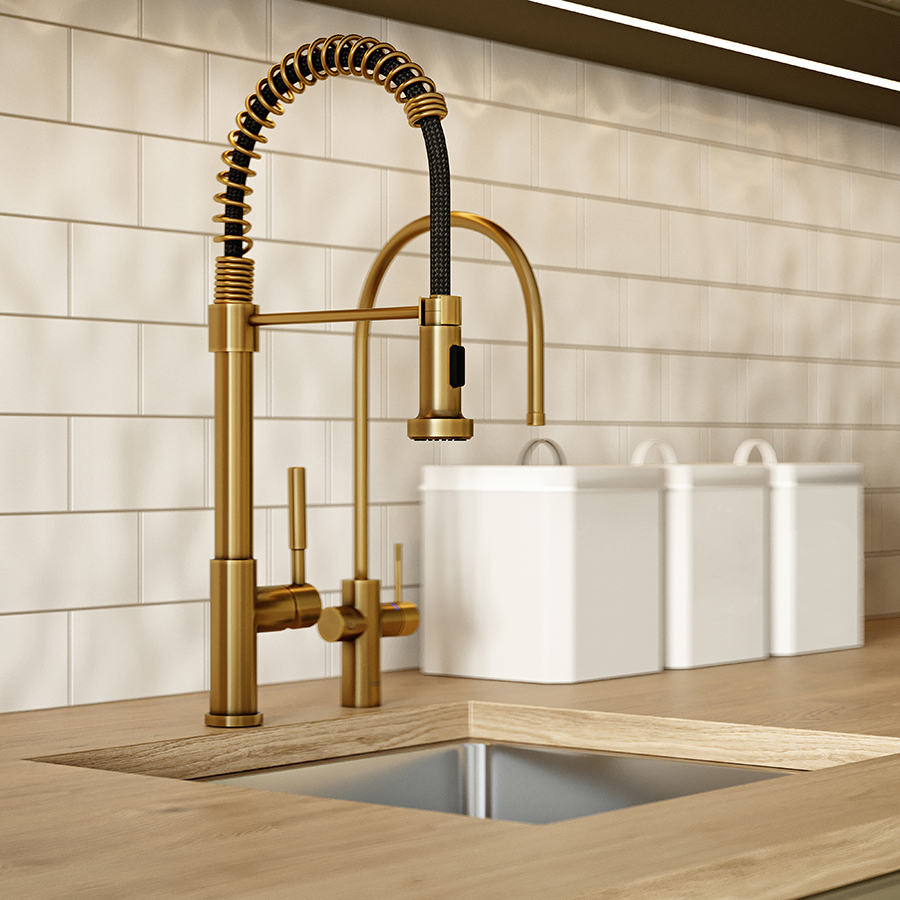
According to them, one of the biggest advantages of glass tiles is their ability to reflect light and brighten up any space. They also noted that glass tiles are incredibly versatile in terms of color, shape, and size options.
However, some experts cautioned that not all types or brands of glass tile are created equal. It’s important to do your research before making a purchase as some lower-quality options may be prone to cracking or chipping over time.
Overall though, most home decor professionals agree that when it comes down to choosing between ceramic or glass tiles for your kitchen backsplash – it ultimately depends on personal preference and budget constraints.
Real-Life Kitchen Examples
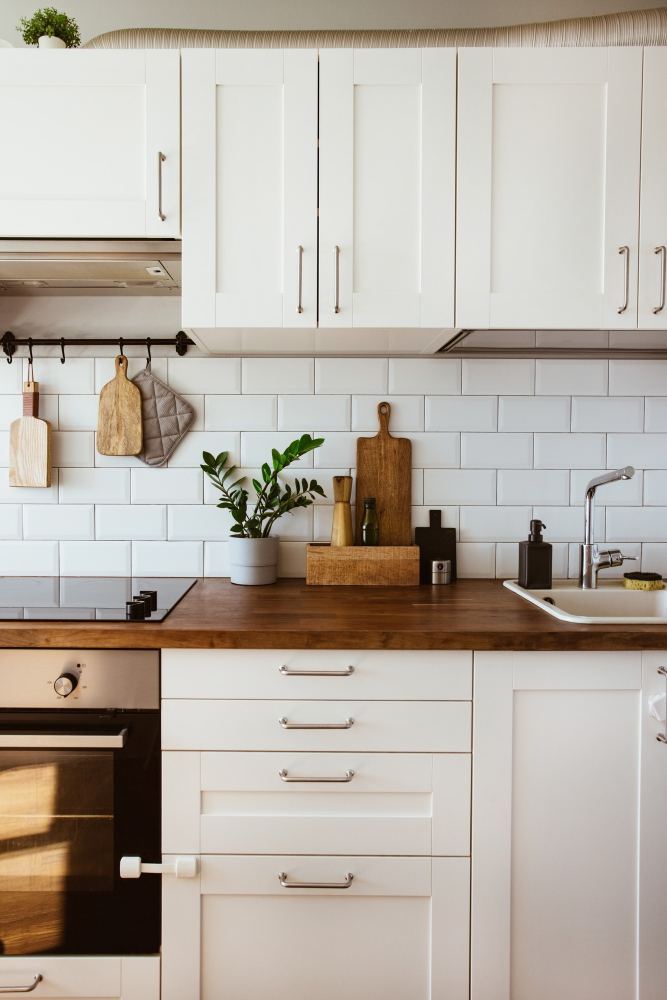
Many homeowners have already made the switch to glass tiles and are thrilled with their decision.
One of the most significant advantages of using glass tiles in your kitchen is that they come in a wide range of colors, shapes, and sizes. This means that you can create virtually any design or pattern you want to match your existing decor.
For example, if you have an all-white kitchen with stainless steel appliances and black countertops, adding a pop of color through a vibrant blue or green glass tile backsplash can make all the difference. On the other hand, if your cabinets are dark wood with gold hardware accents and beige granite countertops – neutral-colored subway-style clear-glass tiles would complement this style perfectly.
Glass tile also works well as an accent piece when combined with other materials such as ceramic or stone. You could use larger ceramic tiles on most areas but add small square-shaped colored-glass pieces randomly throughout for added interest.
Glass Tile Backsplashes offer endless possibilities when it comes to creating unique designs tailored specifically for each homeowner’s taste preferences while providing durability & easy maintenance benefits over traditional materials like Ceramic Tiles!
FAQ
What is the disadvantage of glass backsplash?
Disadvantage: Glass backsplash may crack or get damaged if misused, for example, by cleaning too hard or attempting to move it off the wall.
Should you use glass tile as kitchen backsplash?
Yes, using glass tile as a kitchen backsplash is ideal due to its non-porous properties, stain-resistance, and ability to prevent bacteria and germs.
Is glass tile backsplash hard to keep clean?
Glass tile backsplash is easy to keep clean due to its resistance to staining, mold, and bacteria, and having few seams with no grout.
How does the cost of glass tile compare to other backsplash materials?
The cost of glass tile generally tends to be more expensive compared to other backsplash materials.
How do you install a glass tile backsplash in the kitchen?
To install a glass tile backsplash in the kitchen, first prepare the surface, then apply thinset adhesive, lay the glass tiles, allow them to set, and finally apply grout and clean up.
What are the design options available for a glass tile kitchen backsplash?
Design options for a glass tile kitchen backsplash include mosaic patterns, subway tiles, geometric shapes, and gradient color schemes.
